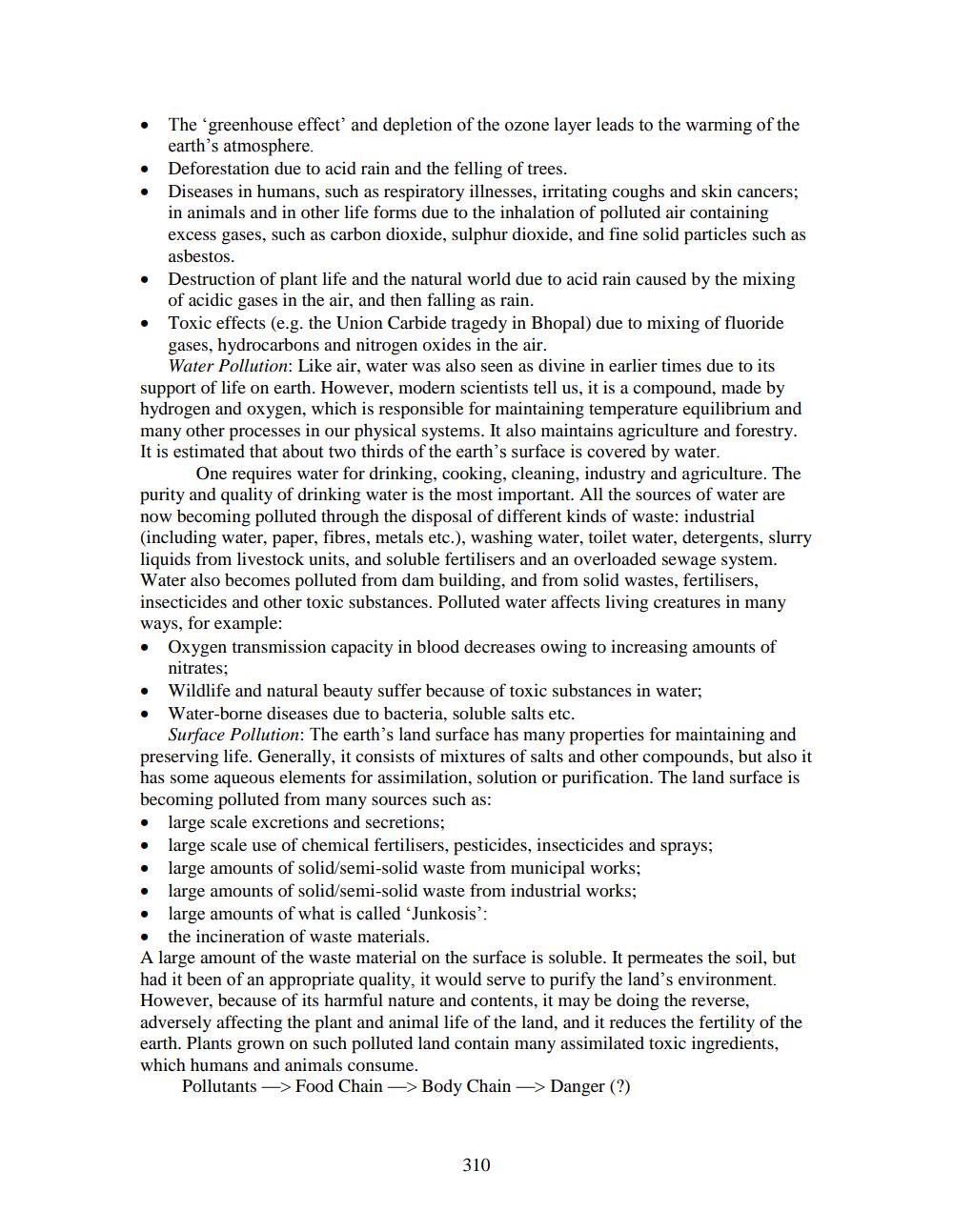________________
•
·
The 'greenhouse effect' and depletion of the ozone layer leads to the warming of the earth's atmosphere.
•
Deforestation due to acid rain and the felling of trees.
Diseases in humans, such as respiratory illnesses, irritating coughs and skin cancers; in animals and in other life forms due to the inhalation of polluted air containing excess gases, such as carbon dioxide, sulphur dioxide, and fine solid particles such as asbestos.
Destruction of plant life and the natural world due to acid rain caused by the mixing of acidic gases in the air, and then falling as rain.
Toxic effects (e.g. the Union Carbide tragedy in Bhopal) due to mixing of fluoride gases, hydrocarbons and nitrogen oxides in the air.
Water Pollution: Like air, water was also seen as divine in earlier times due to its support of life on earth. However, modern scientists tell us, it is a compound, made by hydrogen and oxygen, which is responsible for maintaining temperature equilibrium and many other processes in our physical systems. It also maintains agriculture and forestry. It is estimated that about two thirds of the earth's surface is covered by water.
One requires water for drinking, cooking, cleaning, industry and agriculture. The purity and quality of drinking water is the most important. All the sources of water are now becoming polluted through the disposal of different kinds of waste: industrial (including water, paper, fibres, metals etc.), washing water, toilet water, detergents, slurry liquids from livestock units, and soluble fertilisers and an overloaded sewage system. Water also becomes polluted from dam building, and from solid wastes, fertilisers, insecticides and other toxic substances. Polluted water affects living creatures in many ways, for example:
Oxygen transmission capacity in blood decreases owing to increasing amounts of nitrates;
Wildlife and natural beauty suffer because of toxic substances in water;
Water-borne diseases due to bacteria, soluble salts etc.
Surface Pollution: The earth's land surface has many properties for maintaining and preserving life. Generally, it consists of mixtures of salts and other compounds, but also it has some aqueous elements for assimilation, solution or purification. The land surface is becoming polluted from many sources such as:
⚫ large scale excretions and secretions;
large scale use of chemical fertilisers, pesticides, insecticides and sprays;
⚫ large amounts of solid/semi-solid waste from municipal works;
⚫ large amounts of solid/semi-solid waste from industrial works;
⚫ large amounts of what is called 'Junkosis':
⚫ the incineration of waste materials.
A large amount of the waste material on the surface is soluble. It permeates the soil, but had it been of an appropriate quality, it would serve to purify the land's environment. However, because of its harmful nature and contents, it may be doing the reverse, adversely affecting the plant and animal life of the land, and it reduces the fertility of the earth. Plants grown on such polluted land contain many assimilated toxic ingredients, which humans and animals consume.
Pollutants -> Food Chain -> Body Chain
Danger (?)
310




